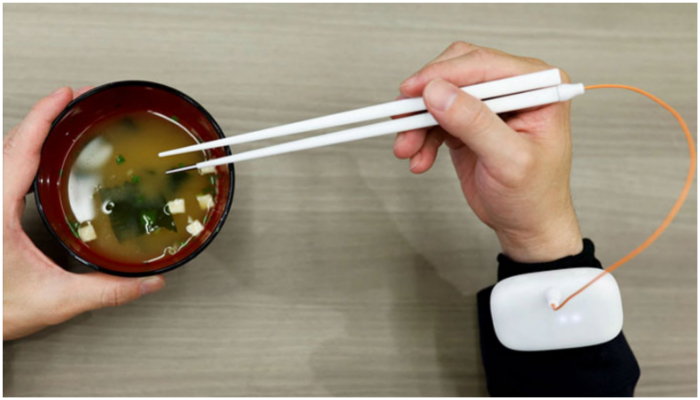New 'electroshock' chopsticks can lower sodium intake
This innovative chopstick has a weak current that can increase perceived saltiness of low-sodium food
July 06, 2022

Researchers in Japan experimented with a chopstick-shaped utensil and found that participants consumed 30 per cent less salt when using it.
This innovative chopstick has a weak current that can increase the perceived saltiness of low-sodium food.
The study was led by scientists at Meiji University and a Japanese company, Kirin. Previous experiments found that a weak electrical current can affect sodium chloride, made up of charged ions, to either enhance or decrease a salty taste.
This new study proved that it's possible to use a weak electric current as a meal tool to help keep a healthy diet.
“Many people consume around twice the salt intake standard recommended by the WHO,” says lead author Yoshinobu Kaji, a master’s student in the Graduate School of Advanced Mathematical Sciences at Meiji University, in a media release.
“This standard cannot be met with a little effort in salt reduction, and a drastic solution is essential. This study is an important approach because it suggests that a 30% reduction in salt can be achieved by electrical stimulation.”









